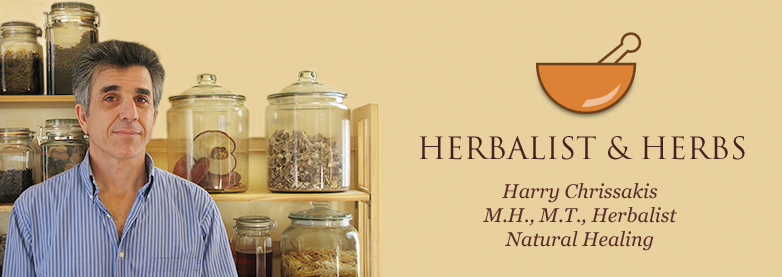By Harry Chrissakis, Herbalist/Natural Medicine
The name American Ginseng (Panax Quinquefolius) does not imply the USA exclusively. It is the territory of North America that it applies to. Some of the best American Ginseng comes from Canada, which is where it was discovered in the late 1700s by a Jesuit Priest who had lived in China. When the Chinese got wind of it they began to import huge amounts from the U.S; so much so that our indigenous crops were decimated. The U.S was exporting over a million pounds a year to China by the early 1800s. Because of this Wild American ginseng is an endangered species and the harvesting of it is tightly controlled. Almost everything on the market is commercially grown. In the U.S. most American ginseng is grown in Wisconsin. Appalachia in the U.S. is still known for its’ high quality “Wild Sang” along with a man named Tommy Bass, who was a known country healer from that area. Eclectic Physicians of the 1800, who were some of the premier herbalists of that time, used American Ginseng as a nerve tonic, to improve stamina, to strengthen the stomach and to increase circulation to the brain (cerebral anemia).
The reason the Chinese took such a keen interest in American Ginseng is because it exhibits different qualities than the Chinese or Korean variety. American ginseng is less warming, less intense, with moistening and nourishing qualities. It is a Top Shelf Adaptogen that truly fits the general needs of Westerners, many of whom live pretty stressful and demanding lives in a relatively toxic environment. The Asian varieties are a little too racy for us Westeners. If you mix the Asian and American together you can somewhat modify the intensity of the Asian Ginseng and still get all the good, without too much push. There are multiple Asian countries that have their own indigenous Ginsengs; China, Korea, Japan and Vietnam. The 3 species of Ginseng available are Panax Ginseng (Asian) Panax Quinquefolius (American) and Panax NotoGinseng (Tenchi ). Siberian Ginseng (Eleutherococcus Senticosus), Devils Club ( Oplopanax Horridus) are not true Ginsengs.
The research on American Ginseng is thick, tall and wide. Adaptogens, which are the highest class of tonic herbs, have seen an explosion of worldwide research. American Ginseng has had a large amount of research done on it. The list of positive effects is a bit mind boggling and seemingly contradictory: i.e American Ginseng will help lower high blood pressure and raise low blood pressure. How so? The reason being that the Adaptogens get to the variety of functions that control blood pressure and normalize it. Adaptogens, in general, enhance, strengthen and balance the function of the Central Hormonal Axis which is also known as HPAT which is short for Hypothalamus/Pituitary/Adrenal/ Thyroid. This is one of the 2 central command centers of our body. The other is the Central Nervous System. If you affect the HPAT axis in a positive way, you will also affect the Central Nervous System in a positive way.
Even with the amount of good things that American Ginseng can do, it is still only 1 player in the treatment of chronic disease as well as in protocols to maintain health or increase athletic ability. Well written protocols are rich with plant medicines, nutritional medicine, supplemental medicine, and dietary medicine, so they contain lots more than Ginseng . Pharmaceutical Drugs and the Ginsengs work well together. This is true in the areas of Cancer, Heart Disease, Diabetes, Parkinson’s, Alzheimer’s ect. There is plenty on paper to prove it.
Getting a good Ginseng product can be challenging. Of all the classes of herbs, Adaptogenic and Tonic herbs have been the most adulterated, because they command the highest dollar. A liquid or capsule product should tell you how old the roots are when harvested (4-6 years for American Ginseng), where they are from (Ginseng needs to grow in a strong 4 season area with cold winters), and should contain some standardized markers such as percentage of ginsenoside content ( six year old roots should contain anywhere from 1-3% ginsenosides). Ginsenosides can be concentrated and standardized up to 80% Always best if you can get whole root from a good source.
Harry Chrissakis,
Herbalist/Natural Medicine
HerbalistandHerbs.com
530-933-8244
Consultation by phone or Zoom
